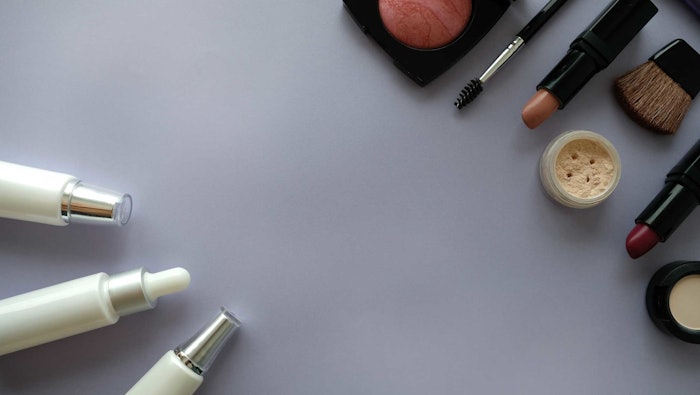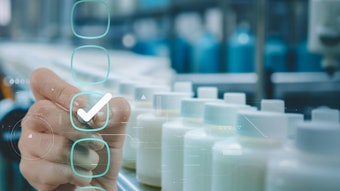
Log in to view the full article
Isolated concerns over cosmetic products and ingredients have emerged in recent headlines. These include: a baby powder recall over potential asbestos-contaminated talc; a study identifying phthalates in children's urine; a proposal in France to ban CBD due to possible reproductive toxicity; and NY's official adoption of restrictions on 1,4-dioxane due to its environmental persistence. Following is a roundup.
Dynacare Baby Powder Recall: Asbestos in Talc
The U.S. Food and Drug Administration (FDA) reported on Sept. 19, 2024, that Dynarex Corp. recalled 62 cases of it talc-based Dynacare Baby Powder due to potential asbestos contamination. While asbestos is a naturally occurring mineral that is often found near talc, it is a carcinogen and has been associated with health risks, as most readers following the J&J talc lawsuits know.
The product was sent to distributors on or after March 11, 2024, by direct delivery in the following states: AL, AR, CO, IL, KY, NC, NJ, PA, TN, FL, WA, WI and sold online on Amazon (Amazon.com). The 4875 (product number) baby powder is packaged in 14 oz. plastic bottles, 24 bottles to a case, identified as batch/lot number B051, with an expiration date of Dec. 28, 2026 (located on the bottom of the bottle). There have been no illnesses or adverse events reported to date.
The recall was the result of a routine sampling program by the FDA that revealed the finished products contained asbestos. The company has ceased the distribution of the product as an investigation is proceeding to determine what caused the contamination of the talc.
Phthalates Identified in Child Skin Care Users
Due to concerns over the potential endocrine-disrupting effects of phthalates, a study published on Sept. 4, 2024, in Environmental Health Perspectives, investigated the potential relationship between child skin care users and urinary concentrations of phthalates/replacement metabolites.
The clinical study examined samples collected from 630 children, ages 4 to 8, and found that certain products, such as children’s lotions and oils, were associated with higher urinary levels of specific phthalates. Other products had fewer if any associations.
In addition, the researchers found differences in phthalate exposures by race and ethnicity. For example, as WUWF88.1 NPR reported, they identified strong associations between the use of hair oils and elevated phthalate levels among children who identified as Hispanic, Asian and Pacific Islander.
The same source adds that as social media helps "fuel a craze for skin care among tweens and teens," these findings are important to consider, since such products could potentially be exposing youths to endocrine-disrupting chemicals. It is important to note that these were merely associations, without conclusive evidence of any adverse effects; still, they are worth considering.
France Proposes CBD Ban Due to Possible Reproductive Toxicity
Benzinga recently highlighted — based on a Cosmeticobs report — France’s plan to introduce harmonized classification and labeling (CLH) for cannabidiol (CBD) in Europe. The plan was introduced last year (in June 2023) based on concerns over CBD's potential reproductive toxicity; France's intent was published by the European Chemicals Agency (ECHA) on Sept. 11, 2024.
According to the sources, CBD is not currently listed in Annex VI of the CLP Regulation. This means CBD products are permitted but not fully registered, per Cannabis Law Report. If the proposal is carried out, the substance could be listed as reprotoxic and labeled as a CMR (carcinogenic, mutagenic or reprotoxic), in turn banning its use from cosmetics in Europe — unless the ban is waived by a Scientific Committee on Consumer Safety (SCCS) opinion, Cosmeticobs adds.
While it is not clear why France flagged CBD at this time for potential reprotoxic concerns, one study published in Food and Chemical Toxicology in June 2023 — around the same time that France's initial plan was introduced — may have planted the idea. The study followed OECD guidelines to assess the potential oral reproductive toxicity of a CBD isolate, yielding positive results.
In brief, "treatment-related mortality, moribundity and decreased body weight and food consumption were observed in high-dose adult animals, consistent with severe maternal toxicity." But remember, this was an orally administered dose.
New York State Outlines 1,4-Dioxane Restrictions in Personal Care, Cosmetics
Finally, the Finger Lakes Daily News reported on Sept. 19, 2024, that the state of New York is the first to officially adopt regulations "to reduce the presence of 1,4-dioxane in personal care, cosmetic and cleansing products."
According to WFRA107.9, while the underlying New York State law requiring reductions in 1,4-dioxane went into effect in December 2022, the regulations adopted on Sept. 18, 2024, will "bolster those efforts by defining the scope of covered products, establishing a standardized method of quantifying the 1,4-dioxane in covered products, and clarifying the process manufacturers must follow to receive waivers."
The law establishes the maximum allowed concentration of 2 ppm on Dec. 31, 2022 and 1 ppm on Dec. 31, 2023, for household cleansing and personal care products. The law also establishes a maximum allowed concentration of 10 ppm of 1,4 dioxane on Dec. 31, 2022, for cosmetics.
Per the Finger Lakes Daily News, the Department of Environmental Conservation (DEC) reports that 1,4-dioxane has been found in ground water throughout the U.S., particularly in Long Island’s EPA-designated Sole Source Aquifer, and in association with industrial and hazardous waste sites. The material's toxicity and persistence in the environment therefore poses a growing challenge, as there is "a need for complex and costly treatment technologies to remove it from drinking water."










